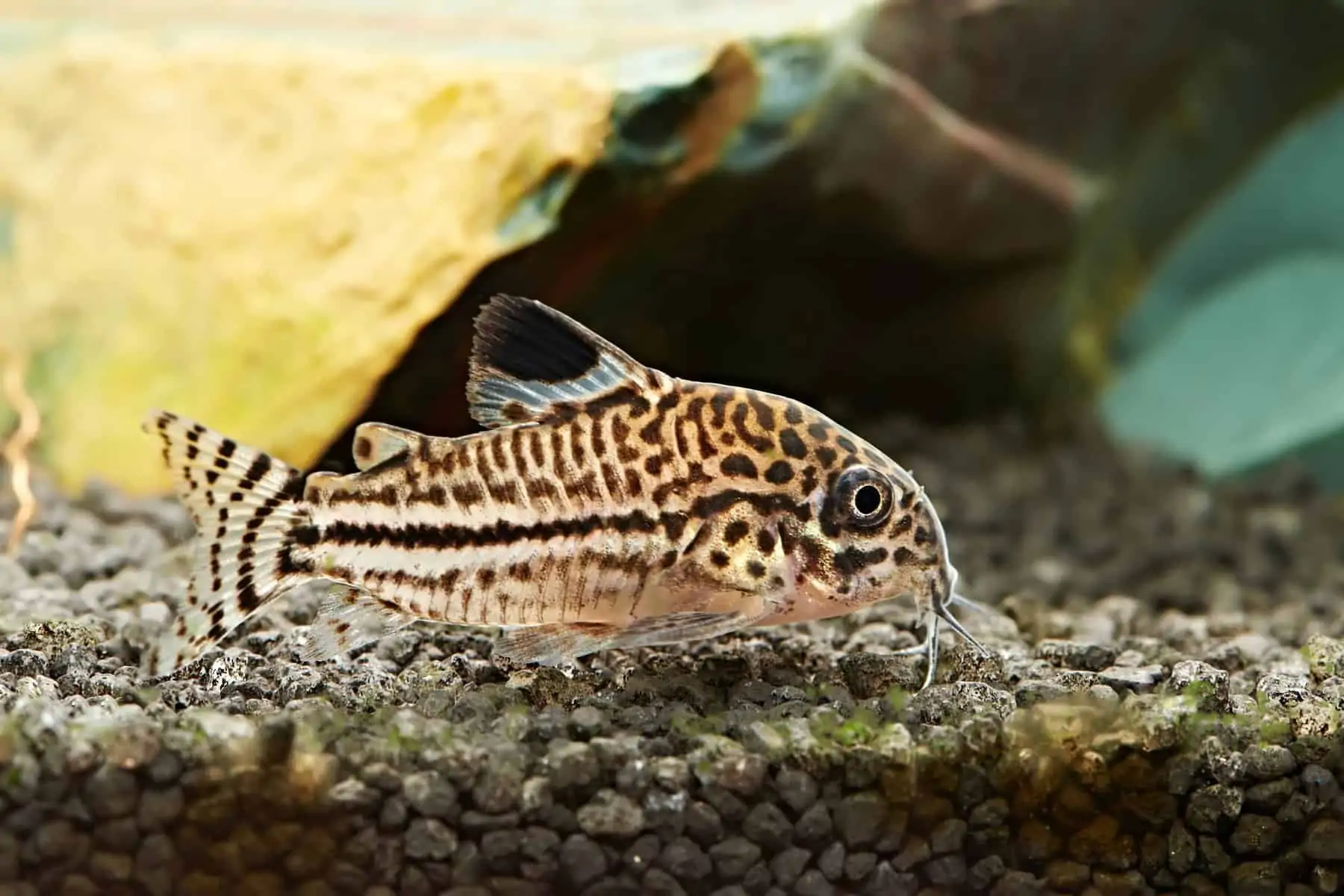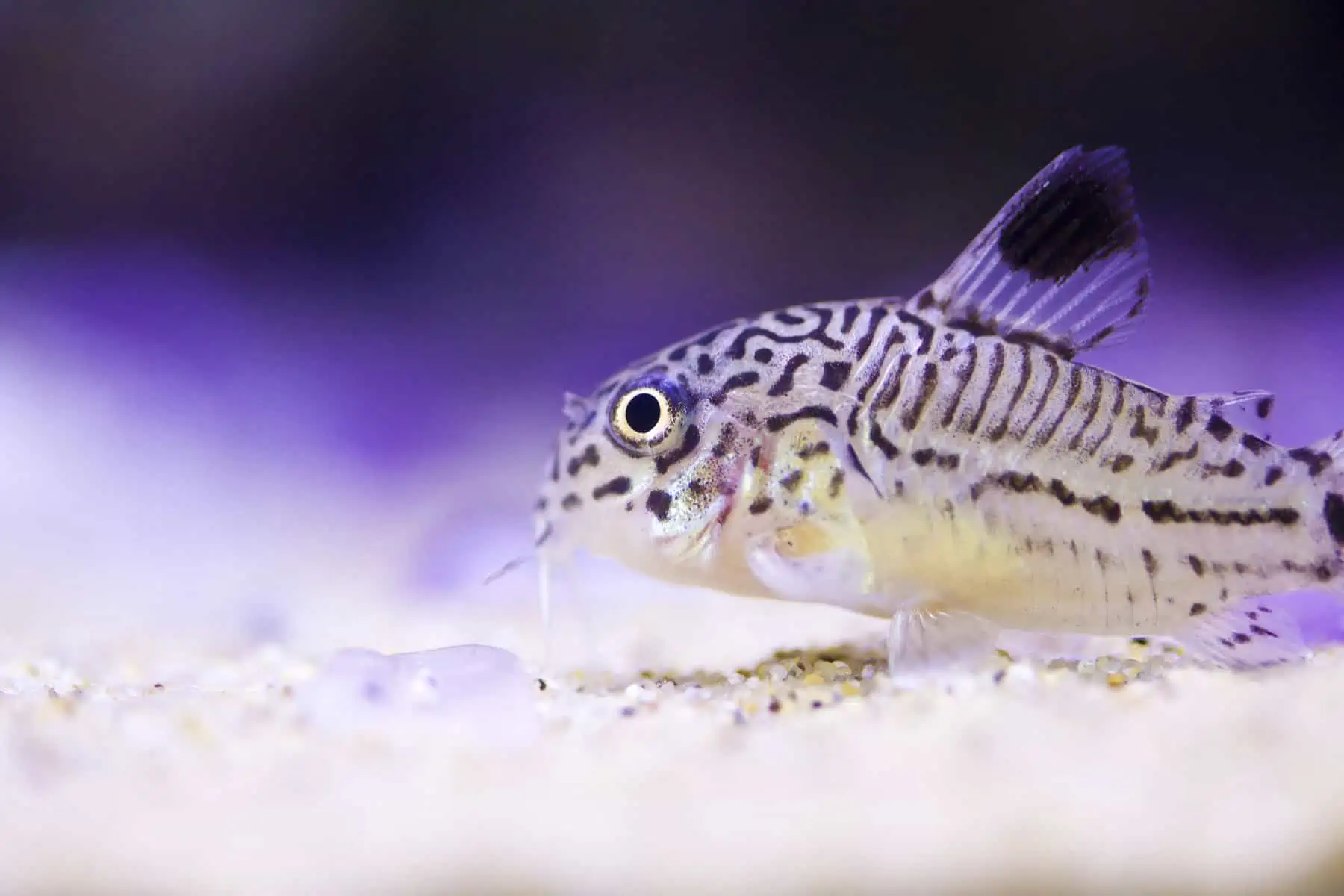Corydoras catfish are a popular addition to many tropical freshwater fish tanks. There are over 160 varieties of Corys to choose from, many of which are easy to care for and beginner-friendly.
The Julii Cory is a pretty little Cory that most pet stores stock. But beware! False Julii Corys are often sold as Julii Corys. So, how do you tell the difference, and does it really matter if you bought the wrong fish?
Read this guide to learn more!
What Is a Julii Cory?

The Julii Cory (Corydoras julii) or Leopard catfish is a nocturnal bottom-dwelling species of catfish that uses its sensitive barbels to forage for food around the tank bottom. These charming little fish can rotate their eyes, giving the impression that the fish is winking!
These cute little fish might look defenseless, but they have armored spikes and scutes that offer them protection against predators.
Origin
Julii Corys are found in Brazil’s lower Amazon region, mainly the Parnaíba River. Here, the fish inhabit flooded forest areas, small tributaries, and creeks.
In comparison, the False Julii Cory comes from the waterways and small rivers of Peru, Colombia, and Brazil.
Appearance
Julii Corydoras have a silvery-gray body with a dark zigzag stripe running along the fish’s lateral line from its gills to its tail. Above and below that is a plain, unspotted section, and beyond are areas with multiple dark spots of various sizes.
The spots on the fish’s body join to form short lines, although those on the head are distinctly separate, which is a feature that sets the species apart.
The fish’s dorsal fin is transparent except for a large black patch on the upper area. The tail fin has vertical rows of brown spotting that look like stripes. The other fins also have those spots, although they are paler in color.
Julii Corys have overlapping armored plates called scutes that protect the fish against skin diseases and predator attacks.
False Julii Cory Appearance

The False Julii Cory (Corydoras trilineatus) is often sold in pet stores as Corydoras julii, purely because the False variety is easier to collect in the wild. Although there’s little difference between the two species, you should know the differences so that you can choose the correct one.
False Julii Corys (Corydoras trilineatus) are often incorrectly sold by fish stores as Corydoras julii. That’s because the False version of these perennially popular fish is much easier to collect from the wild, increasing the profit margin of the trade.
Fortunately, you can spot a False Julii Cory by comparing the two species.
When directly compared with Corydoras trilineatus, True Julii Corys have:
- Shorter heads with rounded snouts
- Smaller bodies and a stouter build
- Small, isolated spots
The False Julii Cory’s spots tend to connect into a reticulated pattern, especially on the head.
Size
Both Julii Corys and False Julii Corys generally grow to be between 2 and 2.5 inches long.
Lifespan
Julii Corys have a life expectancy of five years or longer, whereas False Julii Corys can survive for up to 7 years.
Tank Mates
As with most Corydoras species, you should keep them in a school of at least four or five, ideally more. In nature, many Cory varieties live in groups several hundred strong, so they don’t do well when kept in isolation.
Both True and False Julii Corys can live with other small catfish and small non-aggressive species such as danios, rasboras, tetras, dwarf cichlids, and other common community fish. Snails and shrimp also make suitable tank mates for Corydoras catfish.
Although both these Corys have physical characteristics to defend them against predators, it’s best to avoid keeping them with any aggressive, large fish.
Habitat
Corys of all varieties do best in a well-planted tank with plenty of natural cover and hiding places, driftwood, rocks, and smooth stones.
Since both species are primarily bottom-dwelling fish, I recommend using a soft sand or a fine-gauge gravel substrate that won’t injure the fish as they scurry around the tank bottom in search of food scraps.
Minimum Tank Size
Julii Corys do well in a minimum tank size of 20 gallons. That gives you plenty of space to keep a group of these charming fish and some suitable tank mates.
False Julii Corys must also be kept in same-species groups, but a slightly smaller tank of 15 gallons is sufficient for a group of up to six individuals.
Water Parameters
Both these Corydoras are tropical fish needing warm water to survive and thrive, although they can tolerate slightly cooler conditions.
Julii Corydoras do best in a water temperature of between 75° and 84° F. False Julii Corys, on the other hand, prefer conditions a little cooler at 72° to 79° F.
When it comes to pH levels, Julii Corys prefer slightly acidic water with a pH of 6.0 to 7.5, whereas False Julii Corys enjoy a pH level of 5.9 and 7.0.
Diet
In the wild, both these Corys enjoy a high-protein diet of live foods, such as insect larvae, small crustaceans, worms, some plant matter, algae, and general detritus.
You can feed your tank-kept Corys high-quality sinking pellets, wafers, and frozen meaty foods, such as bloodworms, daphnia, and the like.
Breeding
Both these Corys will breed in a suitable tank environment, provided you feed them a correct diet and provide clean aquarium water. My False Julii Corys spawned on a regular basis, depositing clumps of sticky eggs on plant leaves and the aquarium glass.
However, you’ll need to remove the parent fish before they have a chance to eat the eggs and fry, and it’s best to use a spawning tank if you want to start a breeding project.
Health and Disease
Corys are notoriously hardy fish that are extremely resilient and tolerant of beginner mistakes. I had a group of five Julii Corys that survived quite happily for six years through two house moves and a tank change!
That said, these fish can be vulnerable to bad water quality and the usual common fish diseases encountered by aquarists, including Ich, flukes, and bacterial infections.
However, keeping your fish tank clean and well-maintained and isolating new fish in a quarantine tank before adding them to your main aquarium can keep disease at bay.
Availability
When shopping for Julii Corydoras, remember that these fish are often mislabeled, and you might actually be buying Corydoras trilineatus.
Most fish stores offer Julii Corys and False Julii Corys for sale for a few dollars per fish, but purchasing a group of five or six fish often works out cheaper. That approach makes sense since both species need to live in groups.
Final Thoughts
I hope you enjoyed our guide explaining the differences and similarities between Julii Corys and False Julii Corys. If you did, please share the article with other Corydoras fans!
These two species are peaceful, schooling fish that do well in a community tank with other non-aggressive types. Like all Corys, Julii and False Julii varieties are bottom-dwellers that help keep your tank tidy by eating leftover food scraps from the substrate.
Be aware when shopping for these beginner-friendly fish that the Julii Cory is often mislabeled, and you could bring home a bunch of False Julii Corys instead!


